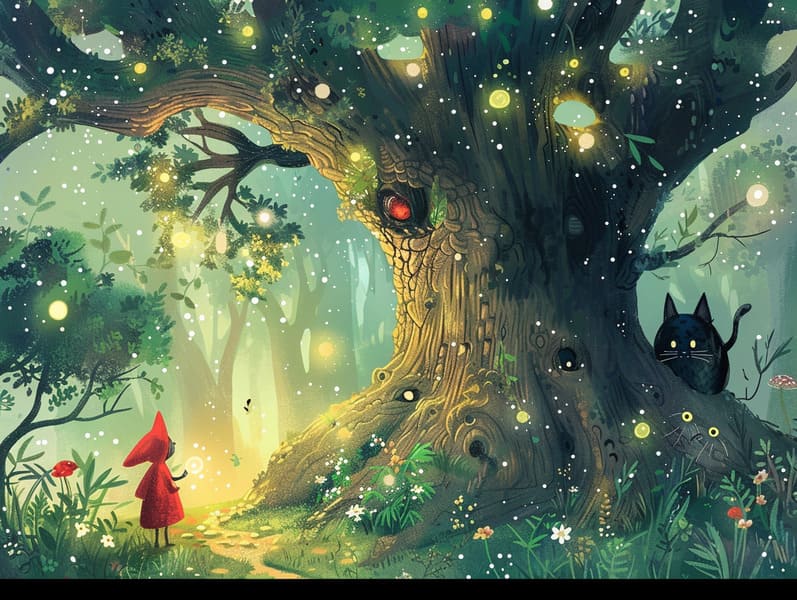Delving into the Background of Legendary Fairy Tales with Their Everlasting Charm.
Delving into the Background of Legendary Fairy Tales with Their Everlasting Charm.
Blog Article

Classic fairy tales have old origins. These stories have been passed down from one generation to the next far before they were ever published. They sprang from a variety of civilizations, including Western traditions. They were initially narrated among grown-ups, often carrying themes and messages concerning the societal norms and beliefs of the time.
Jacob and Wilhelm Grimm, Jacob and Wilhelm (the Grimm brothers), were among the first to gather and publish many of these beloved narratives. Their volume, "Grimm's Story Collection," included classics like "The Story of Cinderella," "Hansel and Grethel," and "Snow-White and Rose-Red," which have since become cornerstones in the world of timeless fairy tales. Similarly, the Danish author's charming tales, such as "The Mermaid," and "The Duckling's Story," have captivated hearts worldwide, guaranteeing their place in the pantheon of famous fairy tales.
Despite their age, traditional fairy tales remain as significant as ever, especially as kids' bedtime tales. These whimsical stories are now available in multiple formats, including colorful picture books, whimsical animations, and digital storybooks.
Their continued relevance can be connected to several enchanting factors:
Significant Morals: Timeless fairy tales often convey important moral lessons. Tales like "The Story of the Boy Who Cried Wolf" teach the benefit of honesty, while "The Hare and the Tortoise" demonstrate the merits of resolve and humility. These stories offer kids clear distinctions between good and bad, shaping their moral compass in a mild yet lasting way.
Kindness and Comprehension: Old fairy tales frequently depict protagonists facing trials and tribulations, fostering young readers to identify with their struggles and cheer for their triumphs. For instance, "The Story of Beauty and the Beast" demonstrates the necessity of valuing inner qualities to recognize the true character of a individual, building compassion and appreciation.
Cultural Understanding: Many traditional fairy tales are deeply ingrained in the cultural contexts from which they came. Delving into these stories can provide fascinating glimpses into different cultures, advancing a sense of world insight and discernment.
Imagination and Innovation: The enchanted elements in ancient fairy tales—fairy godmothers—promote children’s fantastical thinking. These tales carry readers to fantasy realms, stimulating inventive thinking and a get more info sense of wonder that persists a lifetime.
Timeless fairy tales are not only delightful but also edifying. They provide whimsical tools in developing various brain and heart skills in little ones. When fairy tales are spoken out loud, they cultivate language development by showing new phrases and complex sentence structures. This practice also boosts hearing abilities and concentration, as young ones pay close attention, eager to see what happens next.
Furthermore, conversing about the themes and characters of ancient fairy tales can sharpen critical thinking and reasoning skills. Young readers are instructed to discover patterns, predict happenings, and make sense of cause and effect. These examinations also promote kids say their thoughts and feelings, enhancing their emotional intelligence.
In today’s technological age, the prevalence of digital fairy tales has made these stories more attainable than ever. Internet sites and programs offer huge assortments of classic fairy tales that can be viewed or listened to anytime, anywhere. Fairy tales spoken are particularly sought after, sharing an entertaining method for little ones to be a part of these mesmerizing stories. Audio stories and voiced videos lead characters and settings to life, often complemented by whimsical musical scores and music that heighten the tale journey.
The persistent attraction of classic fairy tales lies in their ability to shift to today's society while staying true to their essential themes. Contemporary takes of these narratives often integrate more different protagonists and modern settings, making them familiar to today’s audience. However, the fundamental themes of spirit, humanity, and fairness remain unchanged, continuing to impact audiences of all ages.
Ancient fairy tales also offer a sense of coziness and knownness. They impart a coherent narrative with a definite beginning, middle, and end, often wrapping up with the closure of conflicts and the triumph of goodness over badness. This consistency can be placating for young readers, furnishing a sense of unchangeability in an ever-changing world.
Old fairy tales continue to fascinate and guide new generations, maintaining their splendor and relevance in modern society. As bedtime stories for kids, they make accessible a perfect blend of charm and understanding, facilitating moral values, empathy, and creativity. The accessibility of digital storybooks and the in demand status of fairy tales narrated affirm that these classic tales remain acquirable to new generations.
By perpetuating and telling these stories, we continue to appreciate the rich tapestry of inventiveness and cultural heritage. Whether you are browsing a gorgeously illustrated book, discovering a online library, or listening on an sound book, the attraction of classic fairy tales is always within reach. These stories convey of the continued effect of fairy tales and its ability to link us across eras and regions.
Regardless if you are browsing a vividly illustrated book, experiencing a electronic library, or listening to an read-aloud book, the loveliness of bedtime fairy tales is always within reach.
These fairy tales illustrate of the continued ability of stories and its ability to bond us across epochs and places, creating a bond that delights and instructs alike.